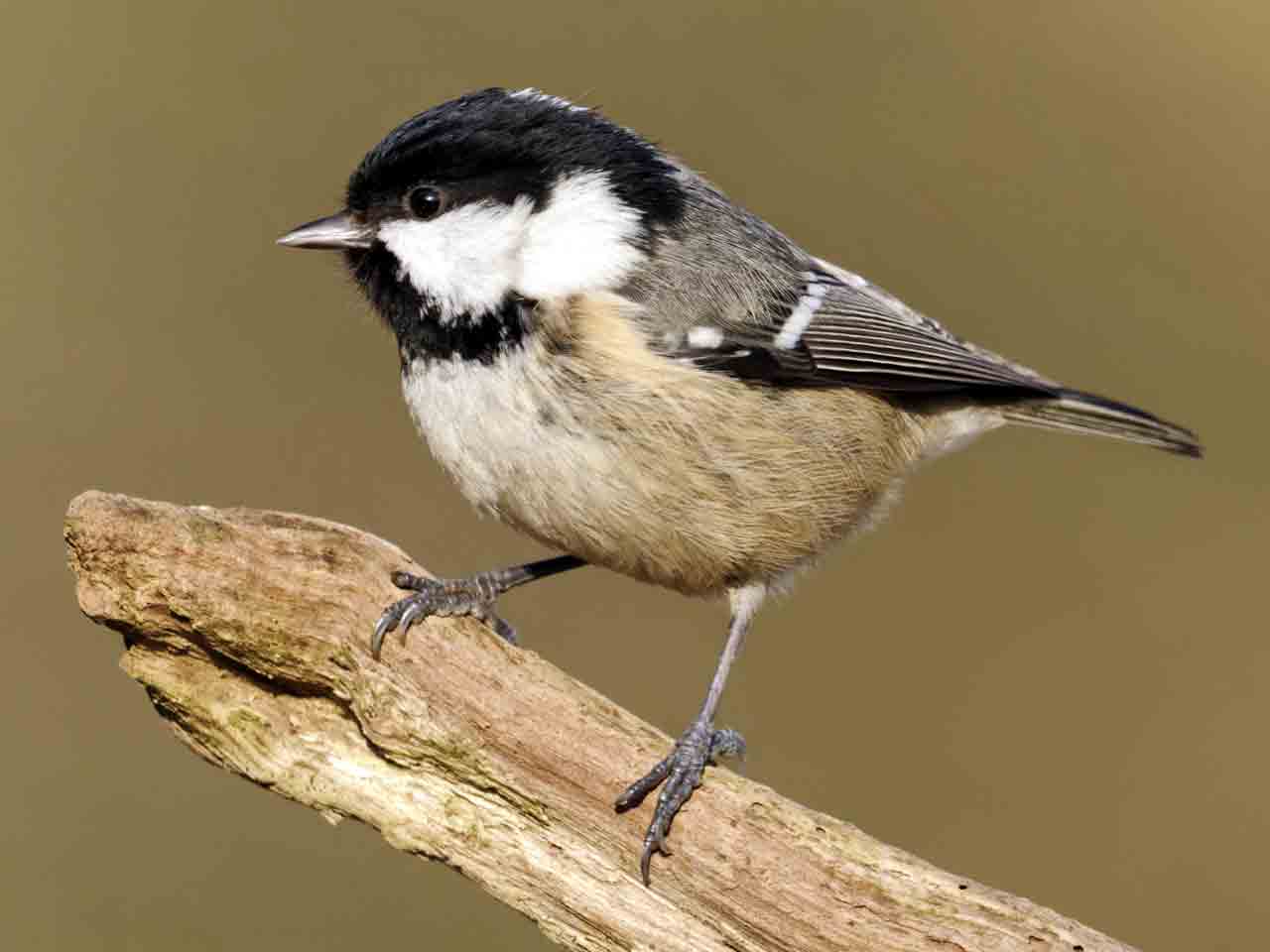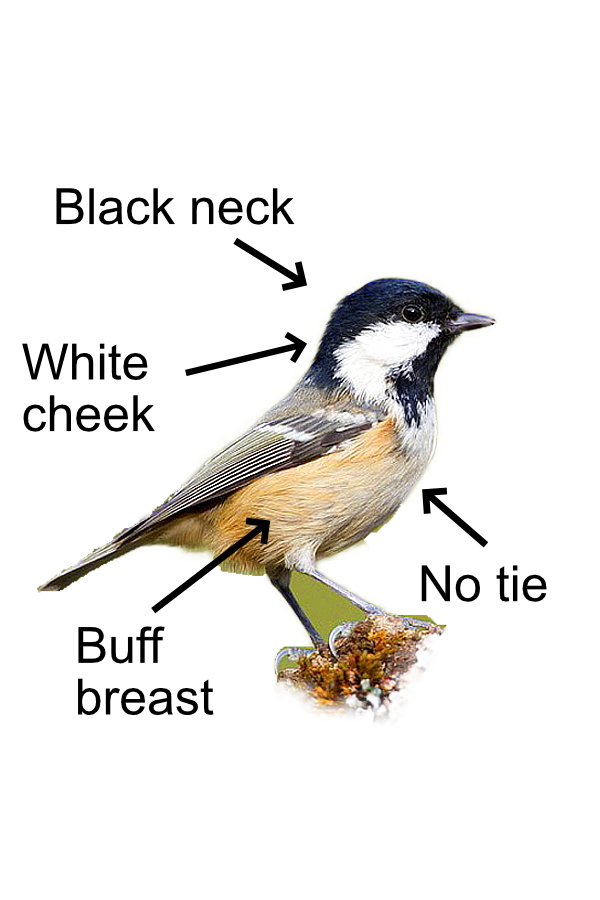
Not as big or as colourful as some of its relatives, the Coal Tit has a distinctive grey back, black head with white cheeks, and a white patch at the back of its neck. He doesn't wear a tie like the Great Tit. Who needs a tie when you have a neck patch? The under parts are buff and there are two small white bars on the grey wings but, being tiny to start with, these are nearly impossible to see. Their Irish cousins have a yellow tinge to their cheeks - from drinking too much Guinness. The Coal Tit's song is like a baby version of the Great Tit's, being much higher pitched and faster.

They love a good pine tree. Being small, light, active and agile, with a fine bill, they can rummage amongst the pine needles for juicy insects (the Great Tit is too heavy for this). They feed high in the tree canopy so the best place to see them, if you don't want to get neck ache, is on a bird feeder. Their main food is insects, though they also eat seeds. They will often take food from feeders to store for eating later.
The Coal Tit nests in a hole in a tree. A favourite nesting site is a hole in a rotting tree-stump, often low down, with the nest deep within. They will also use holes in the ground, burrows of mice or rabbits, chinks between the stones in walls, old nests of other large birds, and even squirrel dreys. The nest is made of moss, hair, and grass closely felted together, and lined with rabbit fur or feathers. Using old holes and rabbit fur comes with its problems. The Coal Tit has the dubious distinction of having the largest number of bird fleas reported from a single nest (5,754 fleas), so not too brilliant at housework. The female lays about 10 eggs, which hatch after 15 days (like other Tits). The youngsters are lazier though, and only leave the nest after 20 days. Surprisingly, after all this childcare, and fleas, the parents sometimes have a second brood.
There are about 750,000 pairs of Coal Tits in the British Isles. They have benefitted from the planting of pine forests and, unlike other Tits, have no problems with Scotland - and kilts. They don't move about much unless they are very hungry. In winter, they join in the communal fun with Long-tailed Tits and Goldcrests. The Latin for Coal Tit is 'parus ater' which means 'tit dusky-black'.